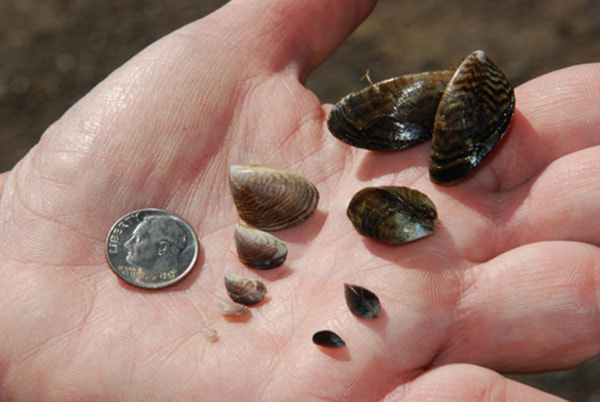The provincial government is taking aim at invasive mussels with a $1.3-million boost for programs that focus on early detection and rapid response.
Through this program, teams will inspect and, if necessary, decontaminate boats entering B.C. from Alberta. They also will respond to boats from the U.S. identified as a concern by the Canadian Border Services Agency, as well as U.S. partner agencies.
In an announcement made in Kelowna last week by Environment Minister Mary Pollack, she said B.C. will work with a number of partners to keep zebra and quagga mussels out of the provincial waters, including Alberta and Washington, and the federal government, as well as the Canadian Border Security Agency and corporations like B.C. Hydro.
She said each crew will be equipped with mobile self-contained decontamination units.
The teams will consist of trained auxiliary conservation officers coming from university compliance training programs offered by Vancouver Island University, providing valuable experience for students and recent graduates
Twenty-four new highway signs featuring the Clean, Drain, Dry program are also being installed at significant entry points into the province.
“We want to make sure these little critters do not get into out lakes and waters,” she said.
For three and a half years, the Okanagan Basin Water Board has been sounding the alarm about the strong possibility of invasive zebra and quagga mussels coming into the valley, asking the Province of B.C. and the federal government to act to protect the water. The water board launched its own ‘Don’t Move a Mussel’ campaign to help raise awareness.
While the province’s latest move doesn’t go as far as the Okanagan Basin Water Board would have liked, chairman Doug Findlater, Mayor of West Kelowna, said he’s happy to see something being done.
“It’s a good start, and we thank the province for taking action,” said Findlater. “It’s a foundation to build upon. And if the province determines that the threat of these mussels needs greater attention, we hope to see enhanced protection.”
He said the OBWB would likely watch how the new moves are going before renewing any calls for monitoring stations at all major road entrances to B.C.
Last March a Canadian border guard at the Osoyoos crossing spotted what appeared to be the invasive mussels on a boat being transported by a commercial hauler, who told officers the boat, which was on its way north from Texas, was going to be moored in Okanagan Lake. The trucker voluntarily agreed to stop and allow the vessel to be inspected. B.C. conservation officers decontaminated the boat and it was later determined the mussels were dead. Despite the boat being stopped from bringing the dead mussels over the border, the Canadian Border Services had no legal right to prevent the boat from coming over.
Pollack said although these invasive species have never been detected alive in British Columbia, this program expansion increases protection of B.C.’s lakes and rivers against the threat of quagga and zebra mussels.
In a news release from her cabinet colleague Todd Stone, B.C. transportation minister, Stone said: “My ministry is proud to be part of this important program. Preventing invasive mussel species from entering our province is crucial to protecting our waterways. I hope to see every boat entering B.C. clean, drained and dry.”
On Tuesday in Kelowna, environment ministry officials gave a demonstration of how to clean, and dry boats that have been in the water to make sure they have no mussels attached.
They said while in most cases washing off boats would be good enough, boaters who use water bodies in the U.S. and Alberta need to be extra vigilant to help keep the destructive mussels from entering B.C.
It is estimated that if they were to get a foothold in B.C. waters, the damage they would create could costs hundreds of millions to repair because they not only clog up pipes they deplete the water they are in of nutrients for other aquatic life.
